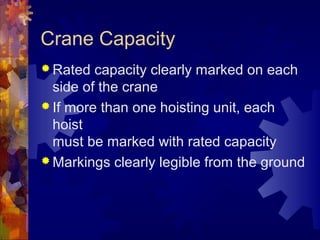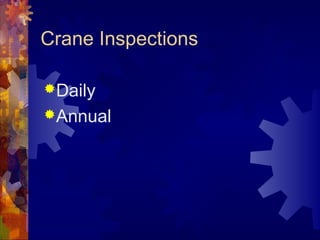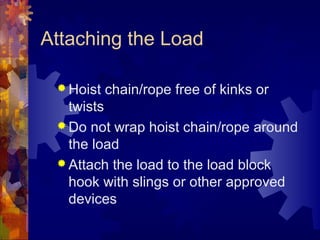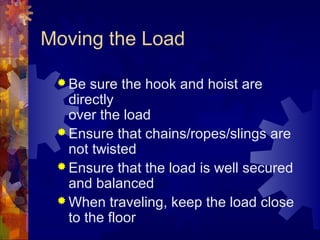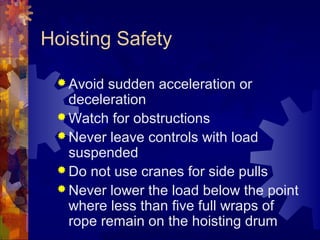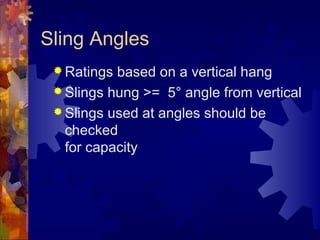This document discusses safety procedures for operating cranes and rigging loads. It outlines that cranes require daily inspections by operators and annual inspections by a third party. Only trained operators are permitted to use cranes. When rigging a load, the load capacity must not be exceeded and slings must be properly secured and inspected before each use. Proper hand signals and procedures are necessary to safely hoist and transport loads without endangering nearby workers.



